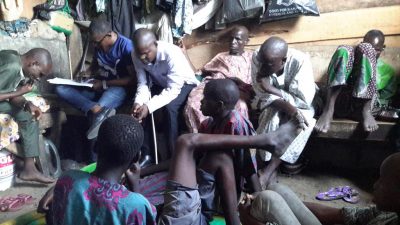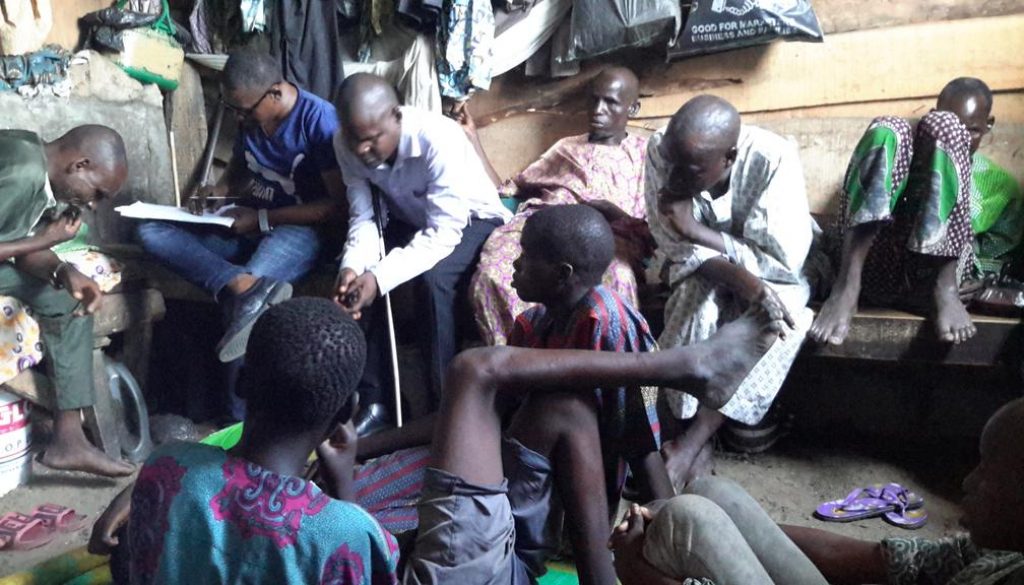Risks and vulnerability related to disability and COVID-19
Risks and vulnerabilities for people with disability in relation to COVID-19 are not uniformly distributed. They are shaped by context and individual factors such as age, gender and impairment.
In the first blog of a series that summarises our Twitter Chat on Disability and COVID-19 we discuss risk and vulnerability. There is a difference between vulnerability to infection, vulnerability to severe symptoms, vulnerability because of lack of access to services or de-prioritisation, and vulnerability to the social, political and economic effects of the pandemic. We discuss these multiple vulnerabilities in the following sub-sections.
Disability may intersect with other axes of oppression, for example women with disabilities may be at different kinds of risk to men. Younger people may experience different risks to older people. All layers of vulnerability and risk are important.
Vulnerability to infection and severe illness
People in refugee or internally displaced peoples’ camps, institutional care and other settings where people live closely together or where people have less agency are vulnerable to infection.
This is a living quarter of one of our communities some twenty people sleep in here every night and this is how we live across lagos and in some places the numbers in a room is up 40 people in a single room hence alot need to be done to protect #DisabilityC19
— PCEI (@PCEI4) April 6, 2020

Some forms of disability increase vulnerability to infection, particularly those that affect the lungs or immune system. Some disabilities could exacerbate symptoms of COVID-19. Older people are more vulnerable to severe symptoms as are people with chronic illnesses such as heart disease or diabetes.
A3: Some people with #disabilities are at higher risk of contracting #COVID19 due to underlying impairments. But we are receiving info on discriminatory treatment of persons w #disabilities when accessing emergency services. Their lives are NOT less of a priority. #DisabilityC19
— IDA (@IDA_CRPD_Forum) April 6, 2020
It is also true that our understanding of physical vulnerability is changing every day as we find out more about the virus.
•Questions of who is at risk change all the time. The viral load seems to have a big impact. We see younger people dying eg nurses, doctors, when not fully protected. Thus those w weak immune systems, resp systems at v high risk w high viral load #disabilityC19
— Janet Price (@JanetPr63191096) April 6, 2020
Certain types of disability, for example intellectual disability, being deaf or blind may mean that you have less access to health promotion information and other forms or advice, increasing vulnerability to risk of infection when you are unsure or unaware of the need or ability to adapt behaviour. @IDA_CRPD_Forum pointed out that, “Blind persons need to sometimes touch surfaces to navigate…Deafblind persons rely on touch and hand language to communicate.”
“Having a different ability (disability) does not by itself put them in at higher risk of infection, but they are in danger due to discrimination and barriers to information, social services, health care, social inclusion, and education.”#COVID19 #DisabilityC19
— Njeri Maria (@NjeriMaria2) April 7, 2020
Vulnerability to violence
We have seen rates of intimate partner violence increase in those countries most affected by the COVID-19 pandemic. Participants pointed out that people with disabilities might be vulnerable in this regard. For example, women with disabilities are often at greater risk of gender-based violence, which is exacerbated in times of crisis.
A6: In a survey done by our DPO Partnership TG, preliminary outcomes show increases in #GBV + increased burden of care work on women and girls, which are disruptors to education. Girls with disabilities are already at greater risk of #GBV and unpaid care work #DisabilityC19
— IDDC (@iddcconsortium) April 6, 2020
Impacts on education
The @iddcconsortium explained that disabled children are routinely deprioritised in terms of education and often drop out of school and there is a risk that the pandemic may exacerbate this situation.
Precarious livelihoods and risk to household income
Participants expressed fears that regularised relief that people with disabilities routinely received from their governments might be obstructed or hampered by the pandemic. They felt that in general people with disabilities are thought of last after others’ needs have been met and this makes them more vulnerable. Some disabled people will have to rely on charitable handouts for survival as a result, which was considered undignified and a denial of their rights.
In low- and middle-income settings disabled people may be employed in the informal sector (for example, deaf parking attendants in Uzbekistan) and thus find it more difficult to adhere to lockdown directives because they cannot work from home. This is particularly true in contexts where social protection is limited. In some settings disabled people may try to make up economic shortfalls through work within the sex industry, placing them at risk of violence and sexually transmitted infections. Children with disabilities may be at higher risk of family separation.
A2.The challenges of the PWD facing during this curfew…The small businesses they were doing to earn a living currently get very little to zero yields. Considering this are people who mostly earned money by hawking in the streets which even on that case, #disabilityC19
— JEtyang (@JosephEtyang7) April 6, 2020
A practical question from my side will be how will people with disability with no education, beg from the street daily, no budget from main stream government and live in impoverished urban informal settlements take part in such COVID19 issue #DisabilityC19
— samuel saidu (@samuelsaidu0) April 6, 2020
Mental ill-health
There are mental health considerations that relate to fear of the pandemic and also fear of the response to the pandemic which threaten the rights, health and lives of people with disabilities.
When people I know blatently disregard civil rights for people with disabilities and then defend their position, it puts a damper on my day. How do you deal with that feeling? How is it so hard for people to treat other people like humans?? #disability #DisabilityC19
— Jennifer Johnson (@jenlowejohnson) April 6, 2020
Those people who have been institutionalised because of mental ill-health are vulnerable in ways that all incarcerated people are; they have little opportunity to protect or isolate themselves and are subject to institutional rules that they have little power over.
•People with #psychosocial #disabilities are more vulnerable because of being placed and/or deprived of their liberty in #psychiatric units and institutions #DisabilityC19
— ShikukuObosi (@ShikukuObosi) April 6, 2020
There was also a concern that disabled people who contract COVID-19 may be subject to a double burden of stigma that would have psychosocial affects. Taking a holistic approach to health and wellbeing is critically important, particularly for those with multiple vulnerabilities. Ensuring all services are adapted for inclusion is essential.
A6: No #HealthForAll without addressing #MentalHealth. Ensure the availability of accessible psychosocial support, notably amongst persons with disabilities, older people, and GBV survivors!?#disabilityC19
— Humanity & Inclusion UK (@HI_UK) April 6, 2020
<<Find out more about this series of blogs on disability and COVID-19

Disability and COVID-19: What did we learn from the Twitter Chat - Arise
14/04/2020 @ 14:12
[…] Risks and vulnerability related to disability and COVID-19 […]
15/04/2020 @ 17:44
We Women with Disability will remain open even when our Doors are Close.
Women with disabilities cannot be held on pause. Now. For the past few weeks, we have all been glued to our different media and information platforms to listen to the daily press briefings of our governments. We must recognize the media for its efficiency in that the media has managed to reassure and inform the general population. The scale of the problem and the urgency to act undoubtedly calls for substantial action. The adopted measures are direct expressions of these decisions. However, this global response led by the public health for the “good of all” puts certain groups of the population at risk, including persons with disabilities, who experience a flagrant lack of support and resources to meet their basic needs. They are rendered invisible; they are never specifically named in press conferences and their cry of alarm is growing on social network platforms Persons with disabilities constitute 15% and represent the largest social minority in the world and specifically English Cameroon in West Africa. At this moment, access to services in crisis situations is inequitable. According to Dr. Arruda, it is important to adapt the response to COVID-19 in the light of everyone’s needs, this should also apply to the realities of people with disabilities. It is vital that they receive the human, technical and material support on which their survival and security depends. Even if we can,t understand the intention behind the Governments’ explanation regarding assistance distribution and having to “put them on pause” for an indefinite period, people with disabilities cannot endure this “pause” without putting their health at risk, and jeopardizing their survival